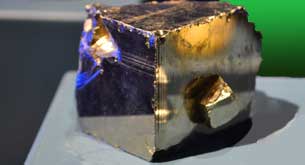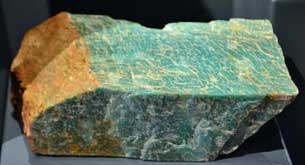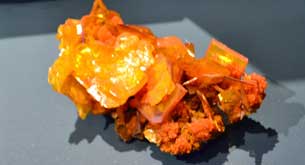Learn Interesting Crystal Facts
Posted by Admin / in Science Facts

Nature has a beautiful method of producing crystals. Crystal structures are formed in a slow, but organized way, resulting in precious gemstones and other products we use every day.
Crystal Facts
- A crystal has atoms that are arranged in an organized structure. Each atom has either weak or strong bonds with the adjoining atoms.
- The number and strength of the bonds with adjoining atoms makes the crystals hard or soft.
- Crystals grow into a specific geometric pattern, enclosed by flat surfaces known as crystal faces.
- Crystallographers are scientists who study crystals.
- Crystallographers use special x-rays to look at the structure of a crystal. The x-rays are sent through the crystal and as they pass through, the rays bounce off the crystal structure. The x-rays are sent again at different angles until an image of the crystal structure is pieced together.
- When a crystal is broken, it breaks along the weakest joints. Since the atomic structure is very organized, the pieces of the crystal will all look very similar, after a larger crystal i s broken.
- There are 6 categories of crystals, which are based on their geometric shape.
- Cubic or isometric crystals have sides that meet at 90 degree angles and look like a cube. Diamond, fluorite, galena, garnet, halite, and pyrite are all examples of cubic crystals

Pyrite with its metallic appearance and cubic shape is a classic example of a cubic crystal.

Halite is another mineral with a cubic crystal structure.
- Triclinic crystals do not have any 90 degree angles and all of the sides have different lengths. Examples of triclinic crystals include amblygonite, microcline, turquoise, ulexite and wollastonite.

Microcline is a good example of a triclinic crystal structure.
- Hexagonal crystals form in the shape of a hexagon. The sides intersect at 60 degree angles and meet at the top in a point. Some examples of hexagonal crystals include Amethyst, aquamarine, beryl calcite, corundum, emerald, Herkimer diamond (quartz), Morganite, quartz, ruby and sapphire.

Calcite crystals shown here are an example of a hexagonal crystal structure

It is very easy to see the hexagonal crystal structure in this corundum
- Monoclinic crystals have 4 sides, but the sides do not meet at 90 degree angles. If each side has an axis, two axes intersect at a 90 degree angle, but the third axis does not. The length of all three axes is different. Azurite, epidote, feldspar, othoclase, phlogopite and staurolite are all examples of monoclinic crystals.

Epidote has a monoclinic crystal structure
- Orthorhombic crystals are similar to monoclinic crystals since all 3 axes have different lengths. They are different because all three axes cross at 90 degree angles. Examples of orthorhomic crystals include aragonite, celestite, chalcocite, peridot, topaz, wavellite and witherite.

One of the best examples of an orthorhombic crystal structure is aragonite
- Tetragonal crystals has 3 axes that intersect at 90 degree angles. Two of the axes are the same length, but one axis is longer. Chalcopyrite, rutile, wulfenite and zircon are are examples of a tetragonal crystal structure.

Wulfenite contains a tetrogonal crystal structure
- Rock crystals, like gemstones, are formed when the rock is heated until it melts. It then must cool very slowly for the atoms to arrange themselves into an organized structure. If the rock cools too quickly, it may turn to a glass-like igneous rock instead of a crystal.
- Rock crystals are normally found underground, near igneous rock deposits. This is where the rock was once melted and then was allowed to cool slowly. Areas around where a volcano erupted may not be a good place to find rock crystals, because lava cools quickly when it is exposed to air or water.
- Crystals found in nature include: Diamonds, salt, sugar, snowflakes, quartz, graphite, gypsum, stalagmites and stalactites (calcite), sulfur crystals, ruby, sapphire, emerald, feldspar and opal.
